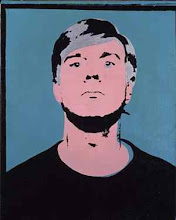 |
| Robert Hughes, photographed in 1972, by Trevor Dallen |
While I did not always agree with his aesthetic judgements, the art critic Robert Hughes was always a good read. He was a strongly opinionated writer (his excellent collection of articles is called Nothing if Not Critical) who could turn a good phrase - I particularly relished his comment to the effect that 'while Julian Schnabel couldn't draw, David Salle couldn't even trace'.
 |
| Damien Hirst, The Virgin Mother, 2005 |
He was withering in reference to Damien Hirst's Virgin Mother (left):
Isn’t it a miracle what so much money and so little ability can produce?... When I look at a thing like this, I realise, so much art… has just become a kind of cruddy game for the self-aggrandisement for the rich and ignorant.






























